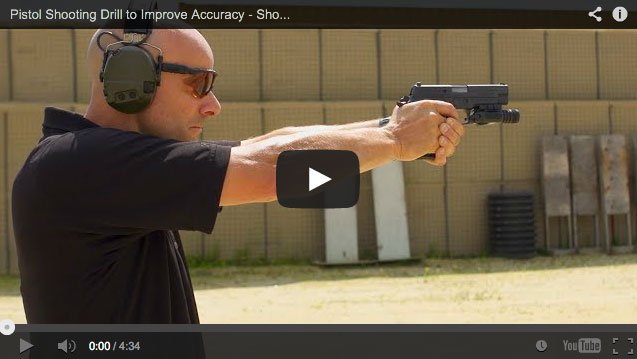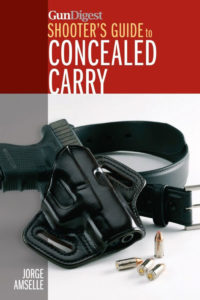
Anybody who has spent any time behind the business end of a gun understands that trigger discipline is one of shooting's most persistent bugaboos.
While the kinetics behind a crisp, clean trigger pull and the subsequent reset are as simple as pie it is easy to fall back into old, bad habits. Rushing the trigger pull or flinching in anticipation of the firearm's recoil are mistakes that can come back to haunt even the most seasoned shooter. Dry fire practice is one of the easiest (and cheapest) ways to hone consistent trigger discipline, but in the above video Adam Painchaud adds a twist to practicing without sending a round down range.
Basically, all the instructor from New Hampshire's SIG Sauer Academy is doing is mixing dry fire with live fire in an effort to expose trigger pull and other shooting missteps. Simple as the drill may appear, it really tends to pull the curtain back on mistakes. And there are a couple of nice aspects to this shooting drill.
First off, this drill is part practice, part diagnostics; not only does it help shooters develop proper mechanics, it also helps them figure out where the hangups are in the first place. Next, it is a drill that can be executed at nearly any shooting range. While some facilities won't allow shooters to draw, there are few (maybe none) that are going to frown upon dry firing. Finally, this is a drill that can be done alone, which makes it easy to slip into any training routine.
The one drawback of the drill is it allows for anticipation; shooters know the next shot will be dry, in turn they will consciously attempt to produce a mechanically sound trigger pull. There are a couple of variations of the drill meant to overcome this and force shooters to remain sound on each trigger pull. The first is to have a shooting partner load the gun either with or without a bullet chambered. The second, is to load one or two snap caps in with the live rounds. Both force the shooter to stress mechanics and accentuates any missteps they might be taking.
There's no arguing the shooting range is for shooting. But by mixing in a little dry fire, shooters might find their live-fire time becoming more fruitful.
Gun Digest's Shooter's Guide to Concealed Carry


![Best Concealed Carry Guns In 2025 [Field Tested] Wilson Combat EDC X9S 1](https://gundigest.com/wp-content/uploads/Wilson-Combat-EDC-X9S-1-324x160.jpg)


![Best 9mm Carbine: Affordable PCCs [Tested] Ruger Carbine Shooting](https://gundigest.com/wp-content/uploads/Ruger-Carbine-Shooting-100x70.jpg)
![Best AR-15: Top Options Available Today [Field Tested] Harrington and Richardson PSA XM177E2 feature](https://gundigest.com/wp-content/uploads/Harrington-and-Richardson-PSA-XM177E2-feature-100x70.jpg)
